实例介绍
【实例截图】
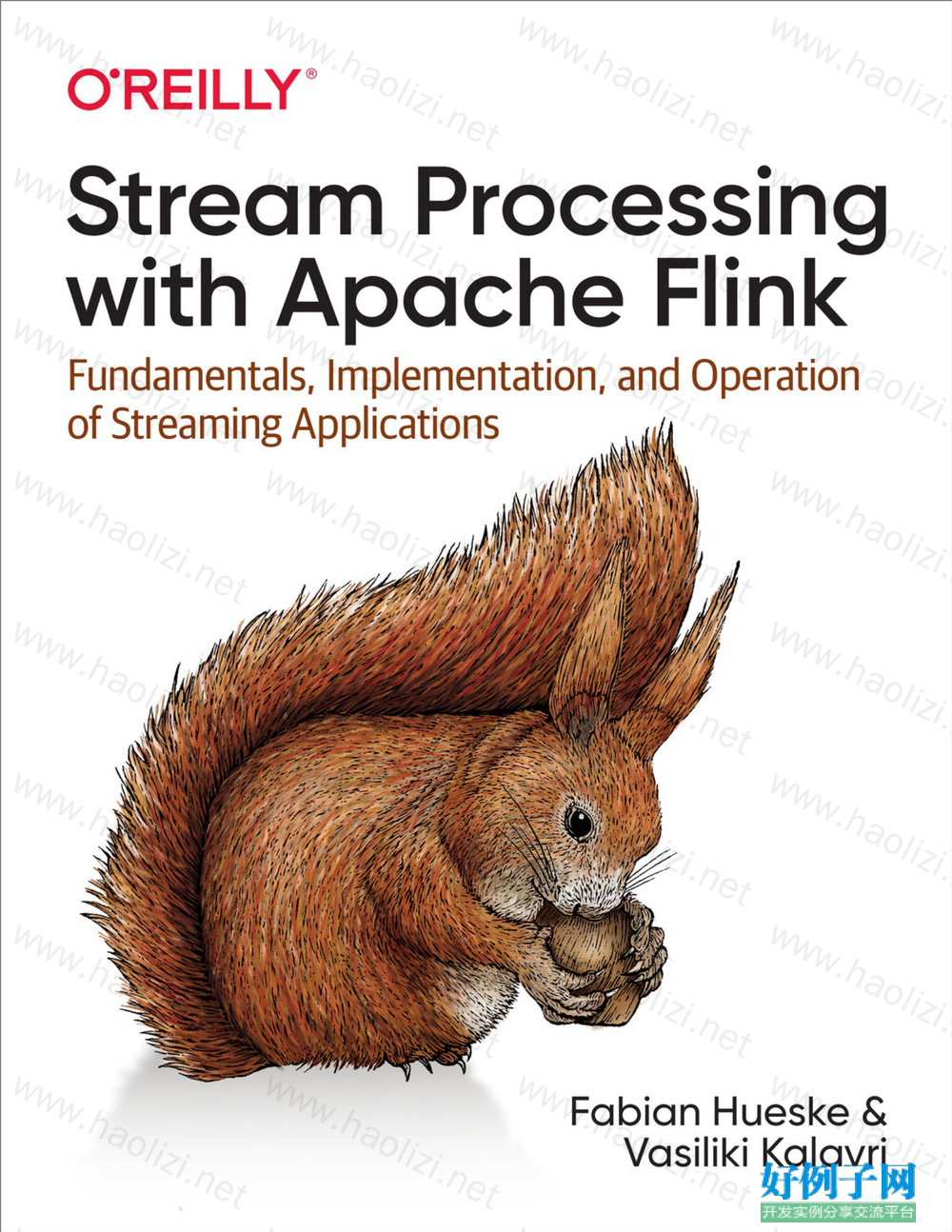
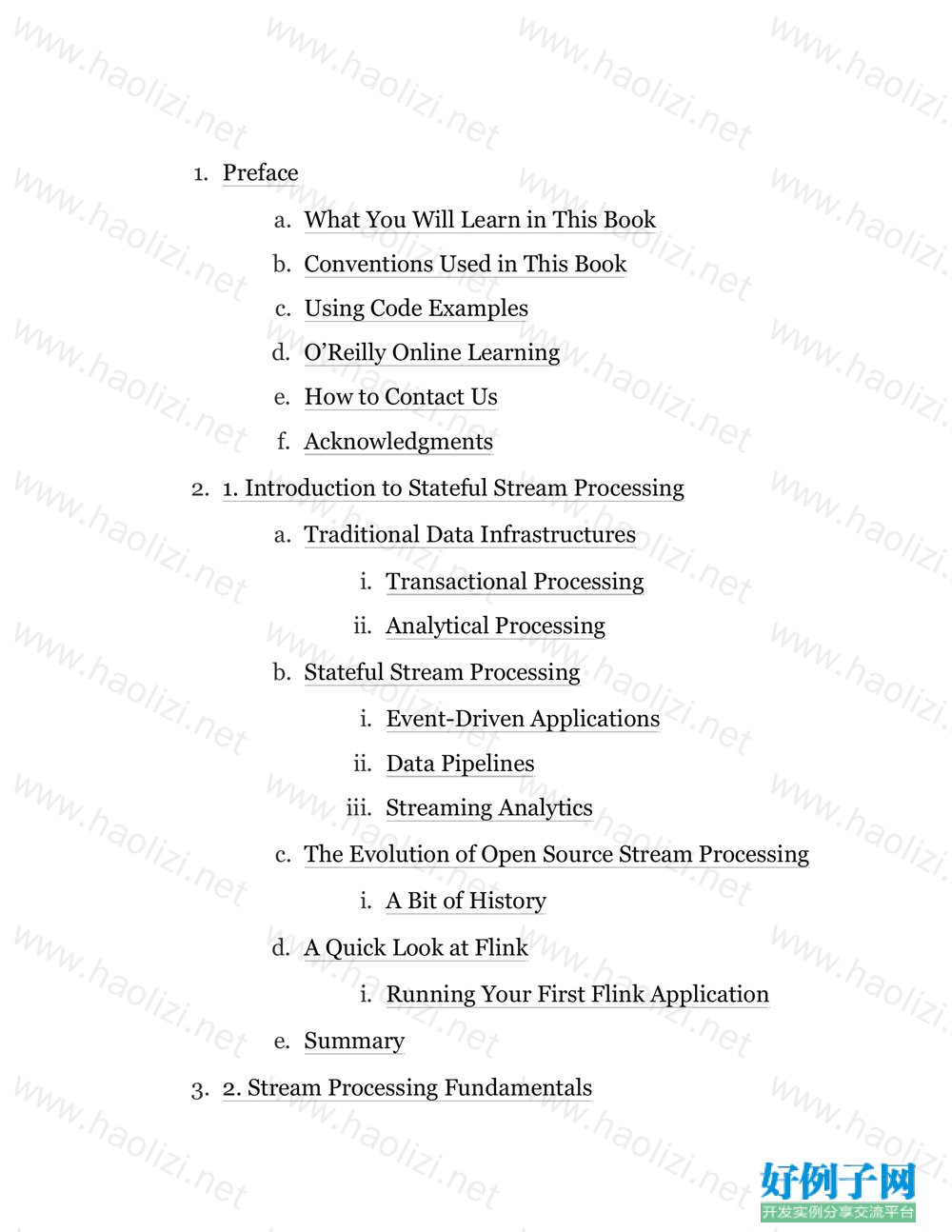
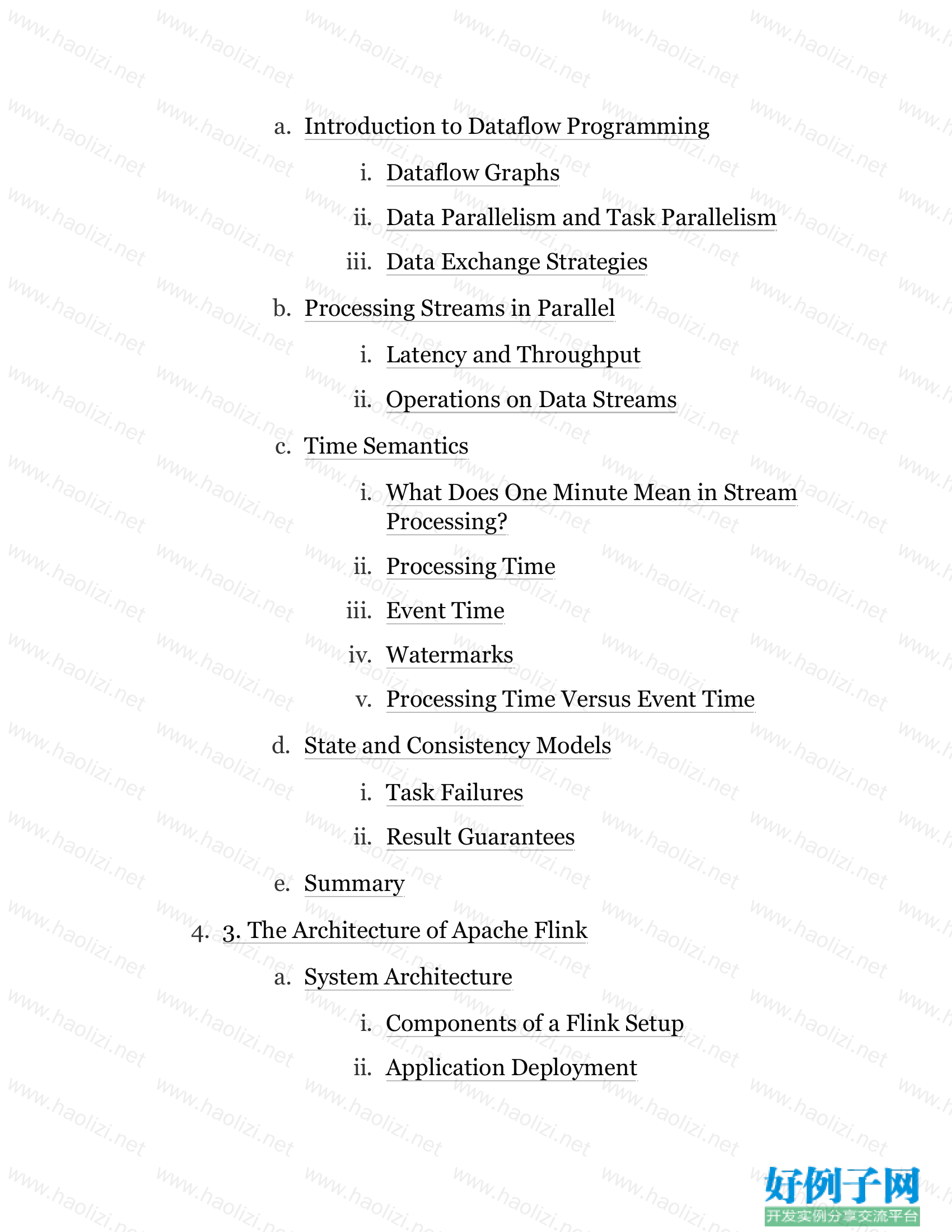
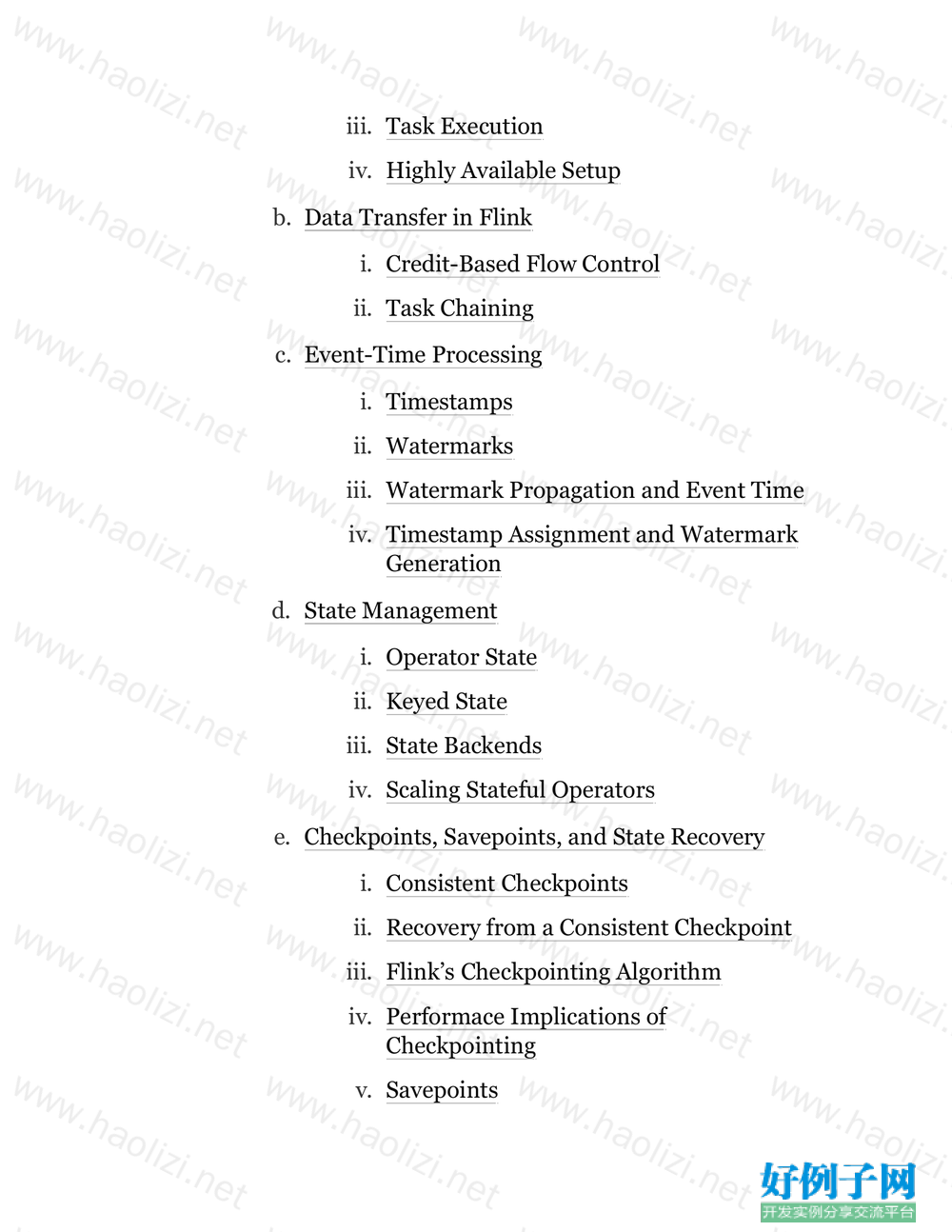
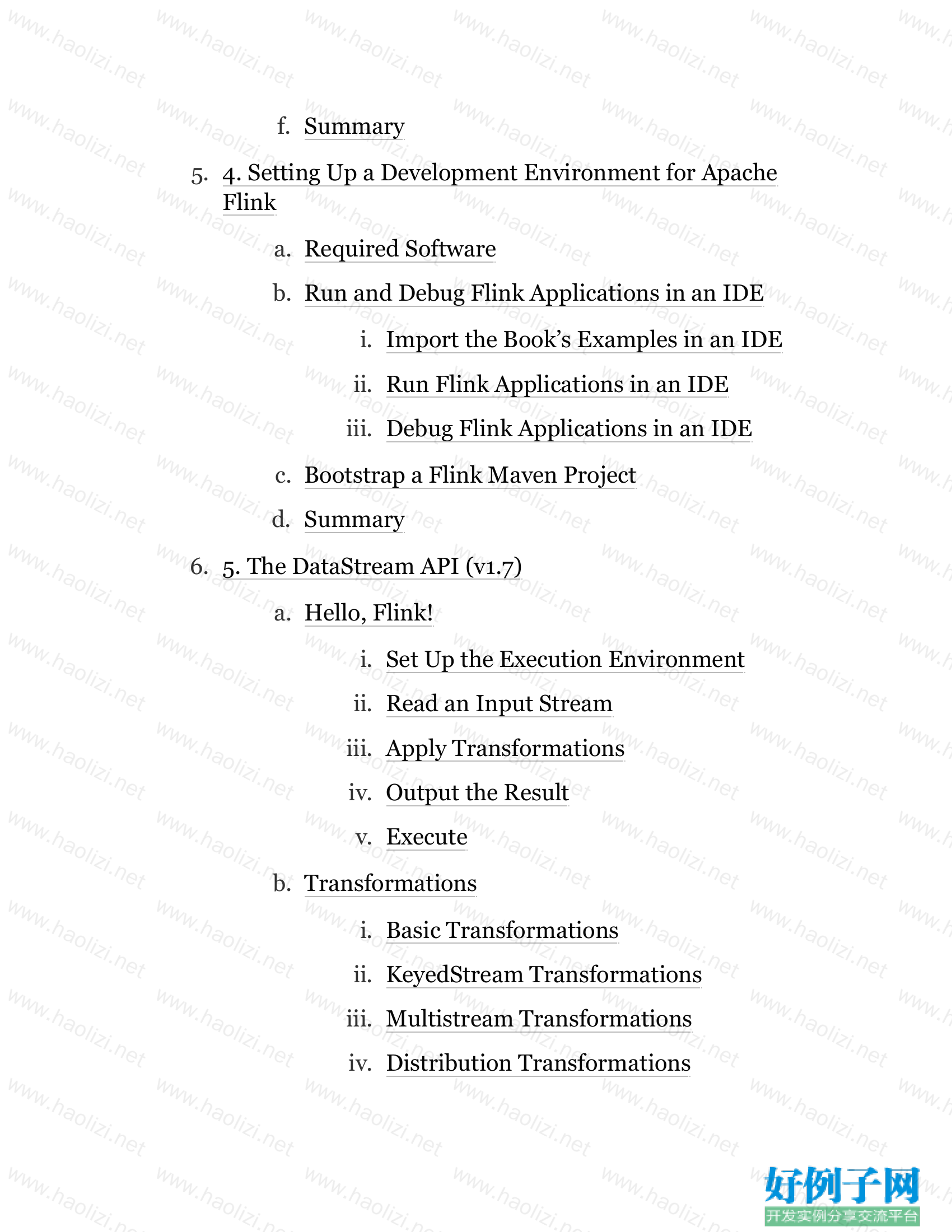
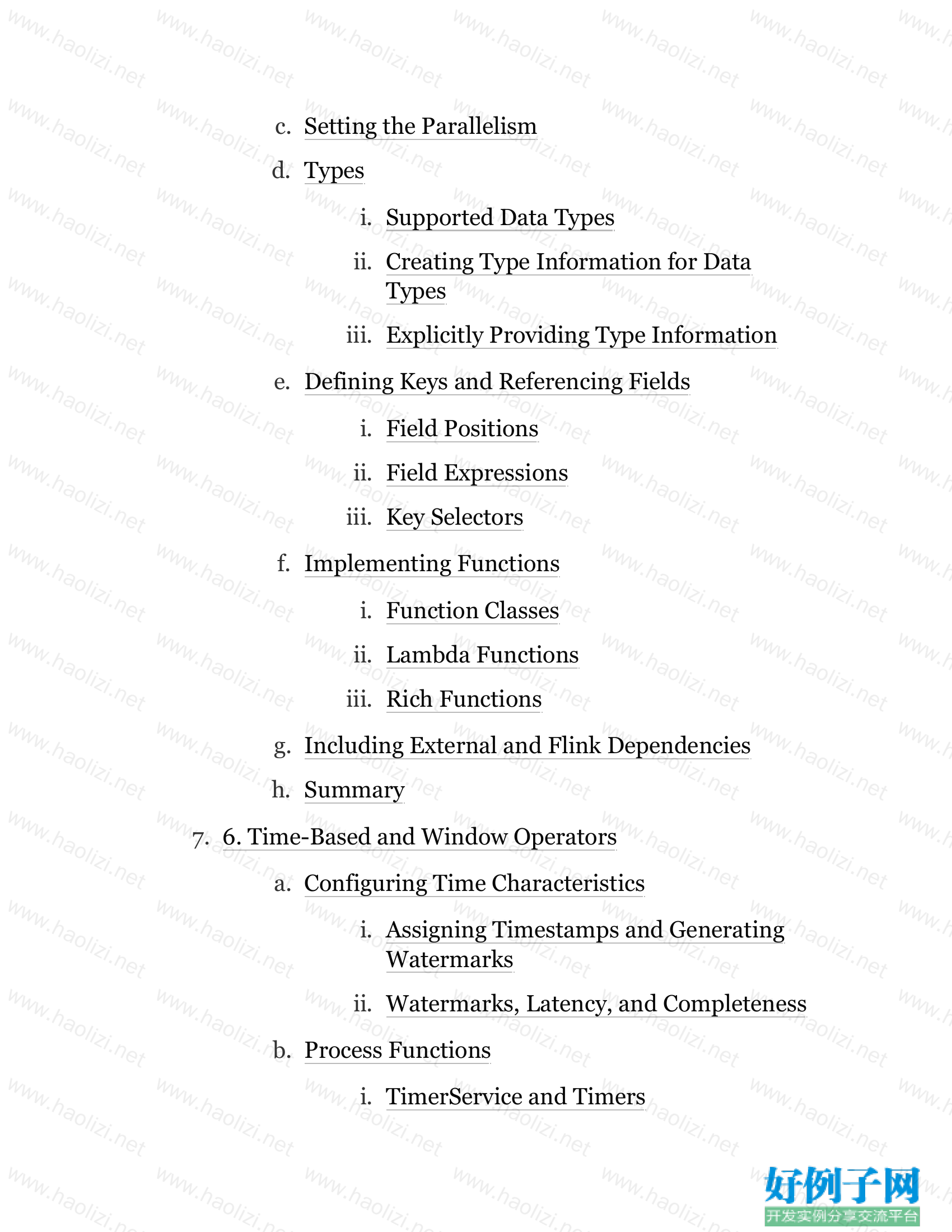
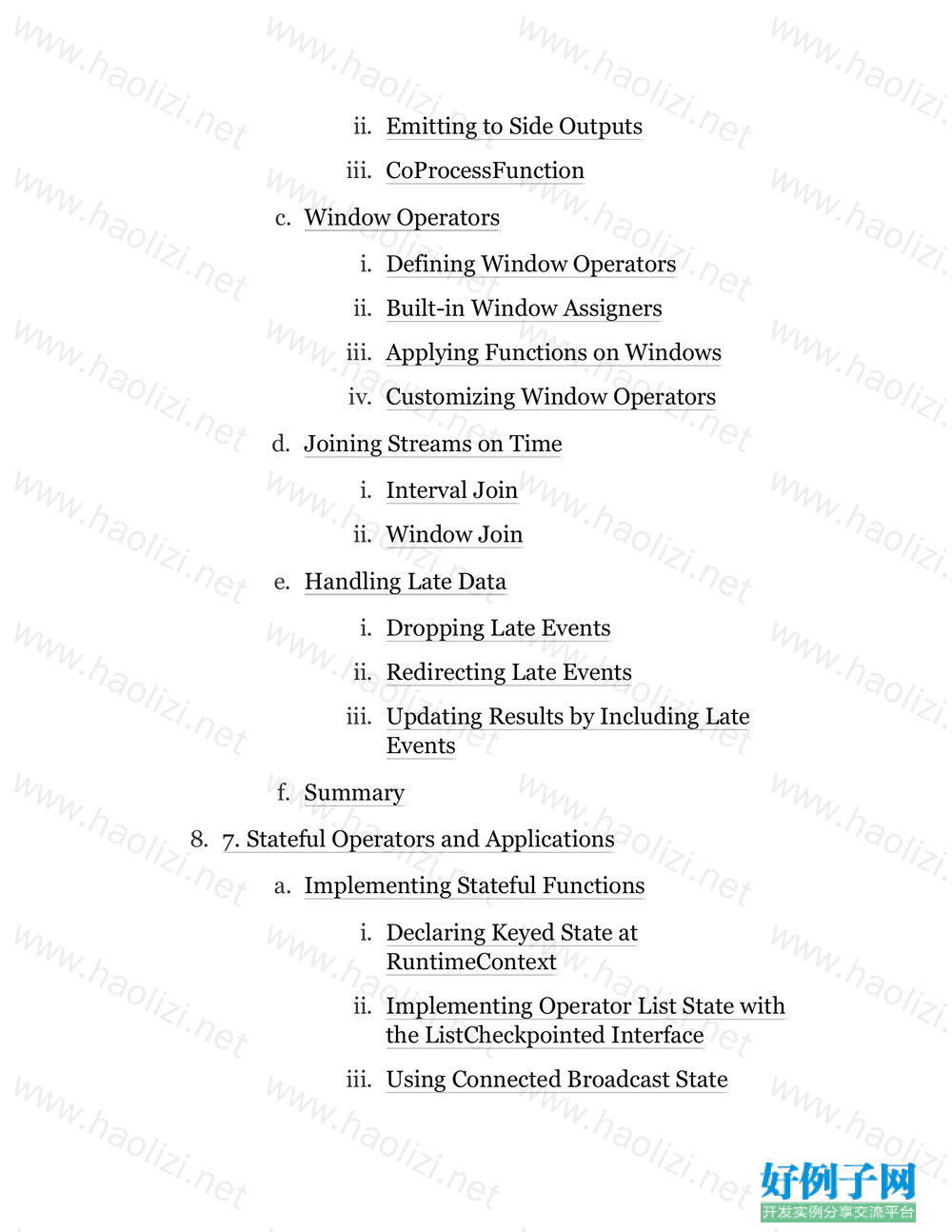
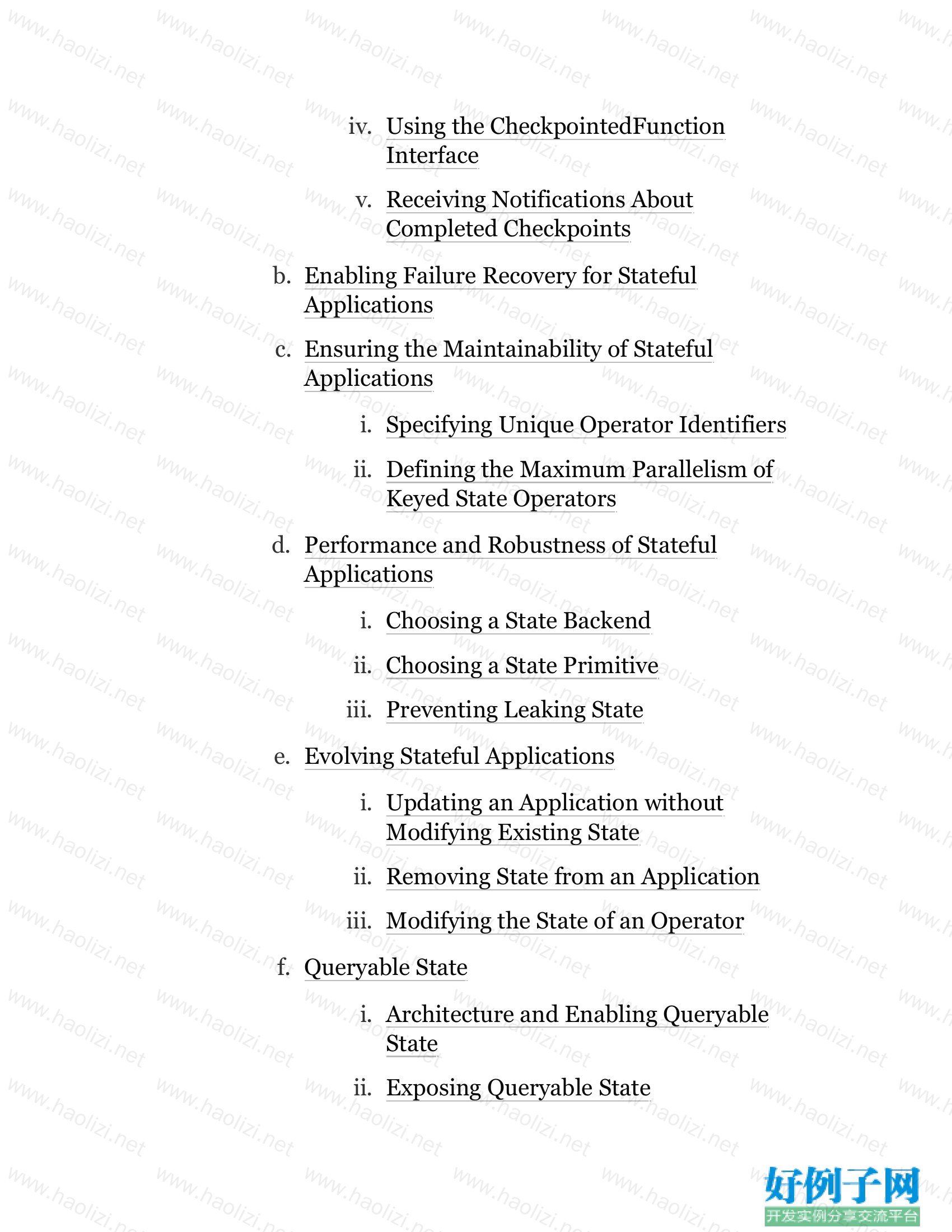


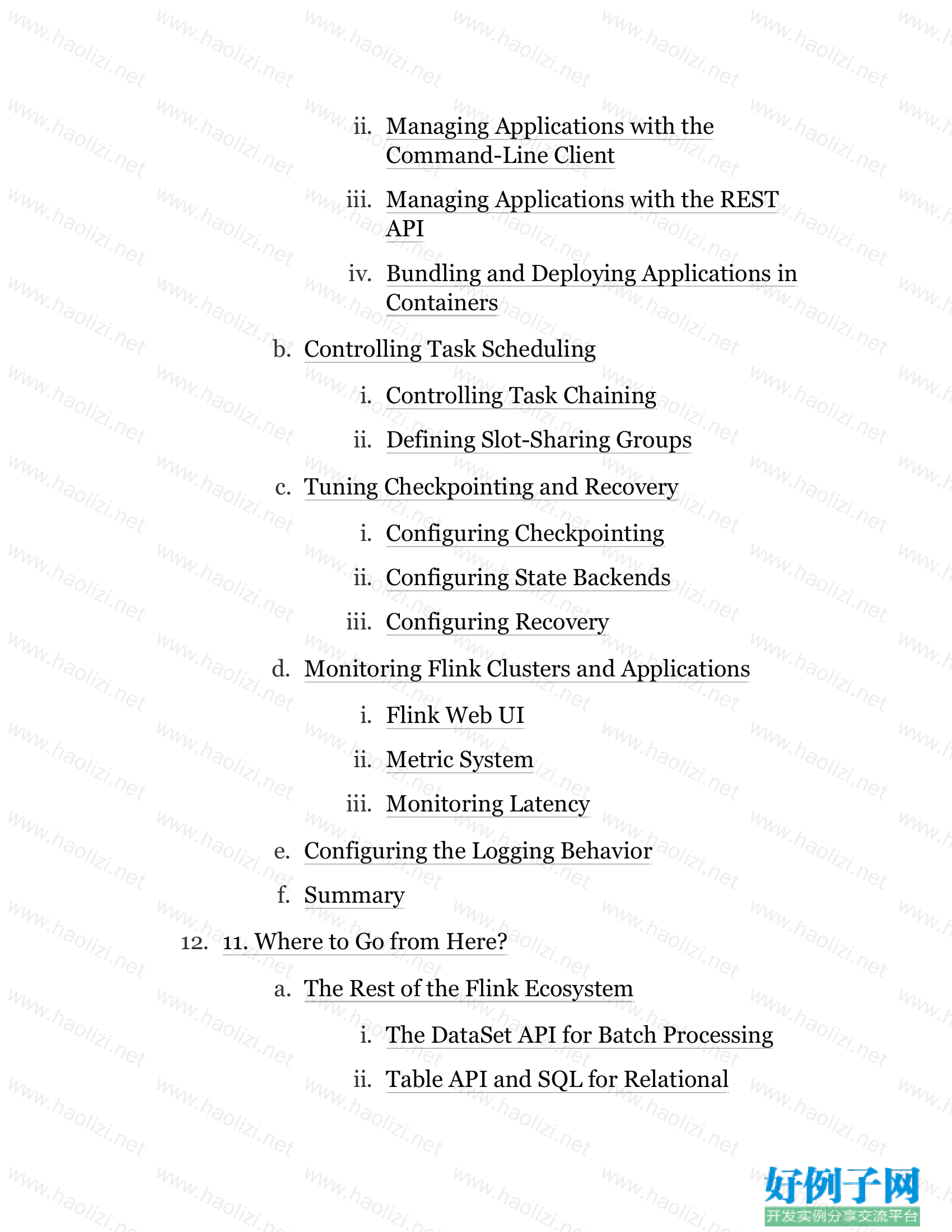
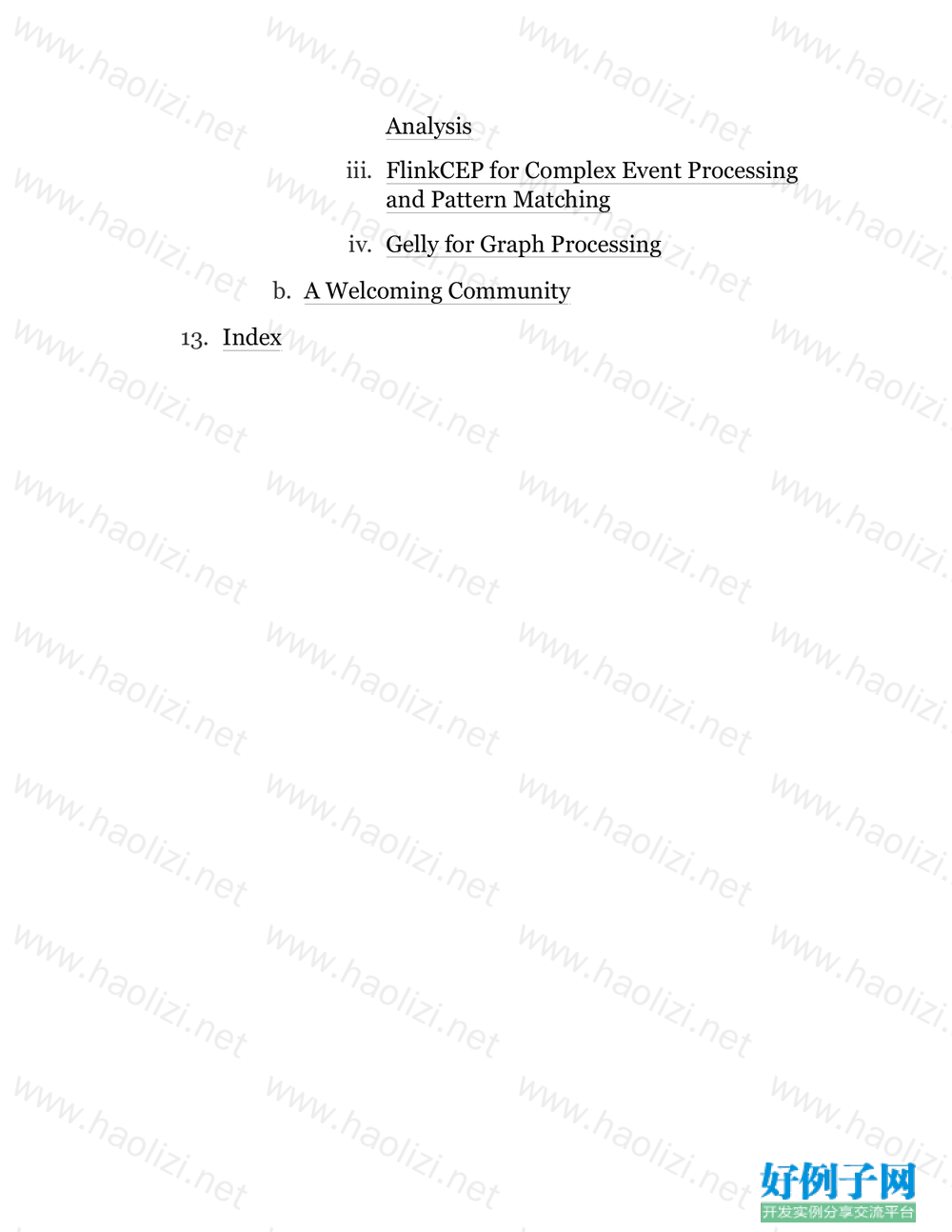
【核心代码】
1. Preface a. What You Will Learn in This Book b. Conventions Used in This Book c. Using Code Examples d. O’Reilly Online Learning e. How to Contact Us f. Acknowledgments 2. 1. Introduction to Stateful Stream Processing a. Traditional Data Infrastructures i. Transactional Processing ii. Analytical Processing b. Stateful Stream Processing i. Event-Driven Applications ii. Data Pipelines iii. Streaming Analytics c. The Evolution of Open Source Stream Processing i. A Bit of History d. A Quick Look at Flink i. Running Your First Flink Application e. Summary 3. 2. Stream Processing Fundamentals a. Introduction to Dataflow Programming i. Dataflow Graphs ii. Data Parallelism and Task Parallelism iii. Data Exchange Strategies b. Processing Streams in Parallel i. Latency and Throughput ii. Operations on Data Streams c. Time Semantics i. What Does One Minute Mean in Stream Processing? ii. Processing Time iii. Event Time iv. Watermarks v. Processing Time Versus Event Time d. State and Consistency Models i. Task Failures ii. Result Guarantees e. Summary 4. 3. The Architecture of Apache Flink a. System Architecture i. Components of a Flink Setup ii. Application Deployment iii. Task Execution iv. Highly Available Setup b. Data Transfer in Flink i. Credit-Based Flow Control ii. Task Chaining c. Event-Time Processing i. Timestamps ii. Watermarks iii. Watermark Propagation and Event Time iv. Timestamp Assignment and Watermark Generation d. State Management i. Operator State ii. Keyed State iii. State Backends iv. Scaling Stateful Operators e. Checkpoints, Savepoints, and State Recovery i. Consistent Checkpoints ii. Recovery from a Consistent Checkpoint iii. Flink’s Checkpointing Algorithm iv. Performace Implications of Checkpointing v. Savepoints f. Summary 5. 4. Setting Up a Development Environment for Apache Flink a. Required Software b. Run and Debug Flink Applications in an IDE i. Import the Book’s Examples in an IDE ii. Run Flink Applications in an IDE iii. Debug Flink Applications in an IDE c. Bootstrap a Flink Maven Project d. Summary 6. 5. The DataStream API (v1.7) a. Hello, Flink! i. Set Up the Execution Environment ii. Read an Input Stream iii. Apply Transformations iv. Output the Result v. Execute b. Transformations i. Basic Transformations ii. KeyedStream Transformations iii. Multistream Transformations iv. Distribution Transformations c. Setting the Parallelism d. Types i. Supported Data Types ii. Creating Type Information for Data Types iii. Explicitly Providing Type Information e. Defining Keys and Referencing Fields i. Field Positions ii. Field Expressions iii. Key Selectors f. Implementing Functions i. Function Classes ii. Lambda Functions iii. Rich Functions g. Including External and Flink Dependencies h. Summary 7. 6. Time-Based and Window Operators a. Configuring Time Characteristics i. Assigning Timestamps and Generating Watermarks ii. Watermarks, Latency, and Completeness b. Process Functions i. TimerService and Timers ii. Emitting to Side Outputs iii. CoProcessFunction c. Window Operators i. Defining Window Operators ii. Built-in Window Assigners iii. Applying Functions on Windows iv. Customizing Window Operators d. Joining Streams on Time i. Interval Join ii. Window Join e. Handling Late Data i. Dropping Late Events ii. Redirecting Late Events iii. Updating Results by Including Late Events f. Summary 8. 7. Stateful Operators and Applications a. Implementing Stateful Functions i. Declaring Keyed State at RuntimeContext ii. Implementing Operator List State with the ListCheckpointed Interface iii. Using Connected Broadcast State iv. Using the CheckpointedFunction Interface v. Receiving Notifications About Completed Checkpoints b. Enabling Failure Recovery for Stateful Applications c. Ensuring the Maintainability of Stateful Applications i. Specifying Unique Operator Identifiers ii. Defining the Maximum Parallelism of Keyed State Operators d. Performance and Robustness of Stateful Applications i. Choosing a State Backend ii. Choosing a State Primitive iii. Preventing Leaking State e. Evolving Stateful Applications i. Updating an Application without Modifying Existing State ii. Removing State from an Application iii. Modifying the State of an Operator f. Queryable State i. Architecture and Enabling Queryable State ii. Exposing Queryable State iii. Querying State from External Applications g. Summary 9. 8. Reading from and Writing to External Systems a. Application Consistency Guarantees i. Idempotent Writes ii. Transactional Writes b. Provided Connectors i. Apache Kafka Source Connector ii. Apache Kafka Sink Connector iii. Filesystem Source Connector iv. Filesystem Sink Connector v. Apache Cassandra Sink Connector c. Implementing a Custom Source Function i. Resettable Source Functions ii. Source Functions, Timestamps, and Watermarks d. Implementing a Custom Sink Function i. Idempotent Sink Connectors ii. Transactional Sink Connectors e. Asynchronously Accessing External Systems f. Summary 10. 9. Setting Up Flink for Streaming Applications a. Deployment Modes i. Standalone Cluster ii. Docker iii. Apache Hadoop YARN iv. Kubernetes b. Highly Available Setups i. HA Standalone Setup ii. HA YARN Setup iii. HA Kubernetes Setup c. Integration with Hadoop Components d. Filesystem Configuration e. System Configuration i. Java and Classloading ii. CPU iii. Main Memory and Network Buffers iv. Disk Storage v. Checkpointing and State Backends vi. Security f. Summary 11. 10. Operating Flink and Streaming Applications a. Running and Managing Streaming Applications i. Savepoints ii. Managing Applications with the Command-Line Client iii. Managing Applications with the REST API iv. Bundling and Deploying Applications in Containers b. Controlling Task Scheduling i. Controlling Task Chaining ii. Defining Slot-Sharing Groups c. Tuning Checkpointing and Recovery i. Configuring Checkpointing ii. Configuring State Backends iii. Configuring Recovery d. Monitoring Flink Clusters and Applications i. Flink Web UI ii. Metric System iii. Monitoring Latency e. Configuring the Logging Behavior f. Summary 12. 11. Where to Go from Here? a. The Rest of the Flink Ecosystem i. The DataSet API for Batch Processing ii. Table API and SQL for Relational Analysis iii. FlinkCEP for Complex Event Processing and Pattern Matching iv. Gelly for Graph Processing b. A Welcoming Community 13. Index
标签: processing Apache flink LIN PAC
小贴士
感谢您为本站写下的评论,您的评论对其它用户来说具有重要的参考价值,所以请认真填写。
- 类似“顶”、“沙发”之类没有营养的文字,对勤劳贡献的楼主来说是令人沮丧的反馈信息。
- 相信您也不想看到一排文字/表情墙,所以请不要反馈意义不大的重复字符,也请尽量不要纯表情的回复。
- 提问之前请再仔细看一遍楼主的说明,或许是您遗漏了。
- 请勿到处挖坑绊人、招贴广告。既占空间让人厌烦,又没人会搭理,于人于己都无利。
关于好例子网
本站旨在为广大IT学习爱好者提供一个非营利性互相学习交流分享平台。本站所有资源都可以被免费获取学习研究。本站资源来自网友分享,对搜索内容的合法性不具有预见性、识别性、控制性,仅供学习研究,请务必在下载后24小时内给予删除,不得用于其他任何用途,否则后果自负。基于互联网的特殊性,平台无法对用户传输的作品、信息、内容的权属或合法性、安全性、合规性、真实性、科学性、完整权、有效性等进行实质审查;无论平台是否已进行审查,用户均应自行承担因其传输的作品、信息、内容而可能或已经产生的侵权或权属纠纷等法律责任。本站所有资源不代表本站的观点或立场,基于网友分享,根据中国法律《信息网络传播权保护条例》第二十二与二十三条之规定,若资源存在侵权或相关问题请联系本站客服人员,点此联系我们。关于更多版权及免责申明参见 版权及免责申明



网友评论
我要评论